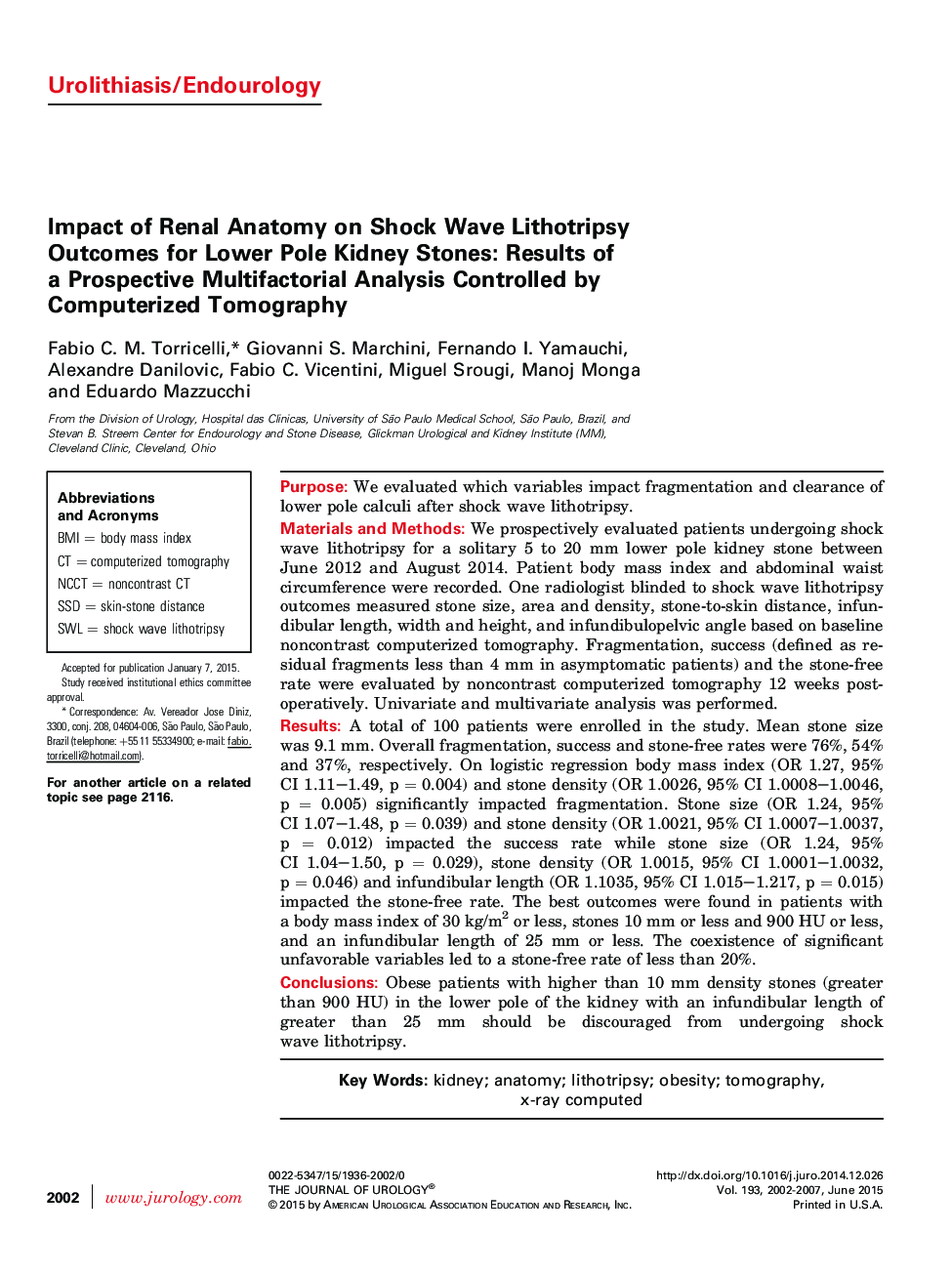| کد مقاله | کد نشریه | سال انتشار | مقاله انگلیسی | نسخه تمام متن |
|---|---|---|---|---|
| 3858808 | 1598889 | 2007 | 6 صفحه PDF | دانلود رایگان |

PurposeWe evaluated which variables impact fragmentation and clearance of lower pole calculi after shock wave lithotripsy.Materials and MethodsWe prospectively evaluated patients undergoing shock wave lithotripsy for a solitary 5 to 20 mm lower pole kidney stone between June 2012 and August 2014. Patient body mass index and abdominal waist circumference were recorded. One radiologist blinded to shock wave lithotripsy outcomes measured stone size, area and density, stone-to-skin distance, infundibular length, width and height, and infundibulopelvic angle based on baseline noncontrast computerized tomography. Fragmentation, success (defined as residual fragments less than 4 mm in asymptomatic patients) and the stone-free rate were evaluated by noncontrast computerized tomography 12 weeks postoperatively. Univariate and multivariate analysis was performed.ResultsA total of 100 patients were enrolled in the study. Mean stone size was 9.1 mm. Overall fragmentation, success and stone-free rates were 76%, 54% and 37%, respectively. On logistic regression body mass index (OR 1.27, 95% CI 1.11–1.49, p = 0.004) and stone density (OR 1.0026, 95% CI 1.0008–1.0046, p = 0.005) significantly impacted fragmentation. Stone size (OR 1.24, 95% CI 1.07–1.48, p = 0.039) and stone density (OR 1.0021, 95% CI 1.0007–1.0037, p = 0.012) impacted the success rate while stone size (OR 1.24, 95% CI 1.04–1.50, p = 0.029), stone density (OR 1.0015, 95% CI 1.0001–1.0032, p = 0.046) and infundibular length (OR 1.1035, 95% CI 1.015–1.217, p = 0.015) impacted the stone-free rate. The best outcomes were found in patients with a body mass index of 30 kg/m2 or less, stones 10 mm or less and 900 HU or less, and an infundibular length of 25 mm or less. The coexistence of significant unfavorable variables led to a stone-free rate of less than 20%.ConclusionsObese patients with higher than 10 mm density stones (greater than 900 HU) in the lower pole of the kidney with an infundibular length of greater than 25 mm should be discouraged from undergoing shock wave lithotripsy.
Journal: The Journal of Urology - Volume 193, Issue 6, June 2015, Pages 2002–2007